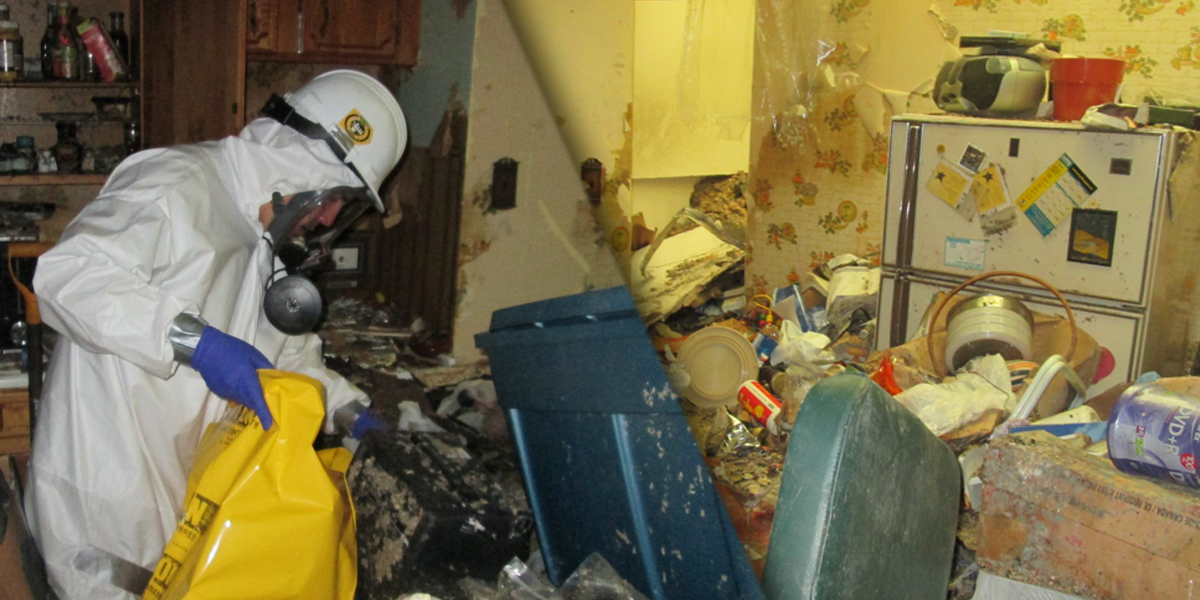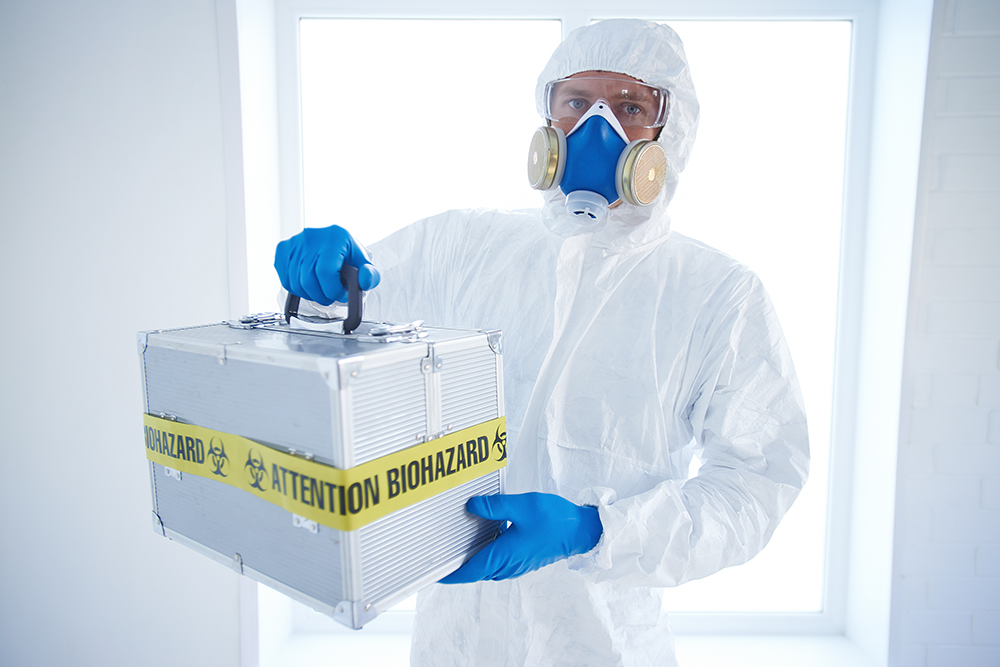Specific ATP Testing for Effective Hygiene and Health Surveillance
Specific ATP Testing for Effective Hygiene and Health Surveillance
Blog Article
Professional Biohazard Cleaning for Criminal Offense Scenes, Injury Incidents, and Contaminated Areas
In the world of expert biohazard cleaning, meticulous interest to information and adherence to safety procedures are paramount. When confronted with the after-effects of a criminal activity scene, trauma case, or any kind of contaminated space, the relevance of appropriate cleaning can not be downplayed. The risks and intricacies related to biohazards require customized knowledge and knowledge to ensure efficient remediation. As we look into the ins and outs of biohazard clean-up for these delicate environments, a much deeper understanding of the obstacles and essential treatments entailed will emerge, clarifying the important function of expert clean-up solutions in recovering security and satisfaction.

Importance of Biohazard Cleaning
Biohazard clean-up adhering to crime scenes and trauma events is vital for ensuring the security of individuals and the setting. When these events occur, they frequently leave a variety of biohazards such as blood, bodily liquids, and other possibly infectious materials. These materials can harbor dangerous microorganisms like microorganisms and viruses, presenting major health and wellness threats if not correctly cleaned up and disinfected.
Expert biohazard cleaning solutions are trained to handle these dangerous products securely and properly. They have the required tools, such as individual protective gear and specialized cleaning agents, to completely sanitize the influenced locations. By delegating the cleanup to skilled experts, people can stay clear of direct exposure to harmful microorganisms and stop the spread of transmittable illness.
Additionally, appropriate biohazard cleanup is necessary for shielding the setting. Inappropriate disposal of biohazardous materials can pollute dirt, water resources, and air, posturing a hazard to wildlife and the environment. By complying with stringent cleanup protocols, professionals can make sure that biohazards are safely removed and thrown away in conformity with guidelines, minimizing the threat of ecological contamination.
Types of Biohazards Encountered
Numerous dangerous materials commonly run into in crime scenes and injury incidents existing considerable health dangers if not handled appropriately. Blood and physical liquids are amongst the most common biohazards discovered in these situations.
One more sort of biohazard typically experienced is sharp items like needles, busted glass, and other things that can trigger injuries and send infections. Chemical hazards are likewise a problem, as criminal activity scenes might contain compounds like tear gas, pepper spray, or medicine production products that call for customized handling and disposal procedures to avoid additional harm.
Moreover, mold and mildew and bacteria growth can happen in rooms where decomposition or extended direct exposure to dampness has actually happened. These microbes can launch contaminants and allergens into the air, posturing respiratory risks to those subjected. Generally, biohazard cleanup professionals must be experienced and well-equipped to effectively handle these various kinds of dangerous materials to make sure the safety and security of themselves and others.
Tools and Safety Equipment
When addressing the vital task of dealing with biohazards run into in criminal activity scenes and injury cases, the use of appropriate tools and safety equipment is critical to guaranteeing the safety of individuals involved in the cleanup procedure. Individual protective equipment (PPE) such as handwear covers, goggles, masks, and coveralls are vital to protect against straight contact with possibly damaging substances. Respirators are crucial when managing biohazards that may become air-borne, securing workers from breathing in hazardous particles. Specialized cleaning devices like biohazard bags, anti-bacterials, and sharps containers are essential for the risk-free collection and disposal of contaminated materials. In addition, durable tools such as industrial-grade cleaner, foggers, and ozone generators may be called for to completely site disinfect the afflicted location. Making sure that all tools is appropriately preserved, on a regular basis evaluated, and made use of according to safety guidelines is crucial in reducing the risk of direct exposure to biohazards throughout clean-up procedures.
Clean-up Process and Methods
Efficient and detailed cleanup of biohazardous materials from criminal activity scenes and injury incidents requires precise attention to detail and adherence to rigorous safety and security methods. The cleaning procedure generally involves several key actions. Initially, the area must be assessed to determine the extent of contamination and the appropriate cleansing techniques pop over to this web-site needed. Next, all biohazardous materials, consisting of blood, physical fluids, and tissue residues, have to be very carefully gotten rid of and disposed of based on regional policies.
Complying with the elimination of biohazardous materials, the damaged location goes through an extensive cleaning and sanitation procedure. This action involves the usage of specialized cleaning representatives and devices to guarantee that all traces of contamination are eradicated. After cleansing, the location goes through strenuous screening to confirm that it is complimentary and safe of any kind of staying biohazards.

Purification and Disposal Procedures
To guarantee complete purification and appropriate disposal of biohazardous materials, complying with the thorough cleaning procedure, certain procedures should be thoroughly followed with rigorous adherence to safety and security procedures. Decontamination involves the removal or neutralization of impurities to minimize the threat of direct exposure and spread of harmful substances. This procedure usually consists of cleaning, disinfecting, and disinfecting the damaged location using customized tools and EPA-approved chemicals.
As soon as decontamination is finished, proper disposal of biohazardous materials is vital to stop further contamination or damage. Biohazardous waste, such as physical fluids or blood-soaked products, should be carefully gathered, packaged, and labeled according to governing guidelines. ATP testing. These products are after that carried to licensed centers for disposal with ideal channels, making sure conformity with local, state, and government policies

Conclusion
To conclude, professional biohazard cleaning is crucial for ensuring the secure and reliable elimination of dangerous materials from crime scenes, injury occurrences, and polluted areas. By utilizing customized tools, protective gear, and adhering to proper cleaning procedures and techniques, biohazard clean-up groups can successfully dispose and sanitize of biohazards, reducing the risk of direct exposure and damage to individuals and the setting.
As we dig into the ins and outs of biohazard clean-up for these delicate atmospheres, a deeper understanding of the obstacles and crucial procedures entailed will arise, dropping light on the essential duty of expert cleanup solutions in restoring safety and security and peace of mind.
Specialist biohazard clean-up solutions are educated to handle these harmful products securely and properly. By complying with rigorous cleanup procedures, professionals can make sure that go to website biohazards are safely removed and disposed of in conformity with regulations, lessening the risk of environmental contamination.
In general, biohazard cleaning professionals need to be well-equipped and skilled to successfully take care of these various types of harmful products to ensure the safety and security of themselves and others.
When dealing with the vital job of handling biohazards experienced in criminal offense scenes and trauma events, the application of proper equipment and protective gear is paramount to making sure the safety and security of people involved in the cleanup process.
Report this page